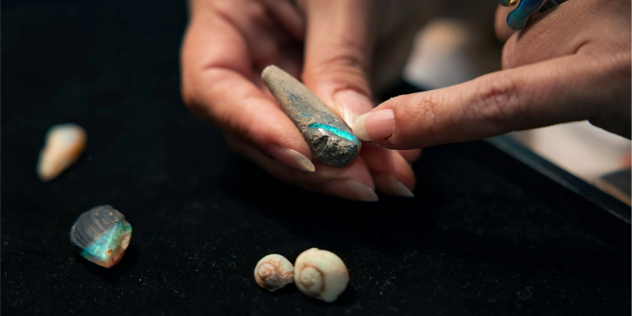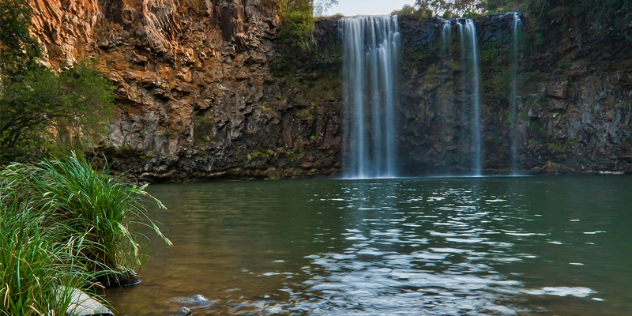Hidden travel gems in NSW

There is no shortage of memorable places to visit in NSW, from taking a cruise on the shimmering waters of Sydney Harbour to the outback wonders of Broken Hill, or the wonderful beaches that line the coastline.
Locating bucket list-worthy destinations in New South Wales is a cinch, but what about hidden spots that relatively unknown to the masses?
Here are five destinations that may not have been on your radar – but should be. As always, be sure to map out your journey with the NRMA Trip Planner, and keep in mind NRMA member rewards along the way!
1. Brewarrina Fish Traps
It’s hard to fathom that 40,000 years ago, Aboriginal communities in the very north of NSW were busy crafting one of the oldest human-made structures on the planet – an ingenious system of fish traps known as Baiame’s Ngunnhu.
The complex network of stones, spanning half a kilometre in the Barwon River, is arranged to form ponds and channels to catch fish travelling upstream. Ngemba guides from the Brewarrina Aboriginal Cultural Museum lead visitors around the National Heritage-listed site, explaining the purpose of the traps and the Dreamtime creation stories behind this part of the state.

2. Lightning Ridge
Black opals are rare. In fact, they’re only found in Australia and largely around the NSW outback town of Lightning Ridge. These precious gems are reason alone to visit the state’s north, but the region’s steamy open-air bore baths add further incentive.
Soak weary limbs in two-million-year-old, mineral-rich water drawn from the Great Artesian Basin – natural pressure propels it 1200 metres to reach the Earth’s surface, where it maintains a temperature of around 40℃ year-round. Being here at sunrise or sunset, or soaking under a bedazzlement of stars, are each particularly memorable.

3. Bermagui Blue Pool
Of the 100-plus ocean-fed rock pools dotting the NSW coast, the 50-metre Blue Pool in Bermagui is regularly ranked among the prettiest. Splashing about here, at the base of a dramatic cliff, is a bit like cooling off in an enormous liquid opal.
It’s regularly refreshed with seawater, waves crashing over its barriers. And you’ll be sharing it with a menagerie of marine animals, from anemones and sea stars to crabs and fish. Nothing quite compares to the first moment you dip your head under water here; it’s a salve for the soul. And when it’s time to dry off, nearby places to refuel abound – oysters are a specialty along this stretch of the state’s Sapphire Coast.

4. Waterfall Way
The Waterfall Way is one of NSW’s most epic road trips, traversing 190 kilometres from Coffs Harbour on the mid-North Coast inland to Armidale. Your route begins by the sea 530 kilometres north of Sydney, then cuts through Dorrigo National Park, part of the UNESCO-listed Gondwana Rainforests of Australia, the most diverse rainforest on the planet.
Visit the Dorrigo Rainforest Centre to gain perspective from the cantilevered Skywalk lookout, then map any of dozens of treks through the vast valleys below. And if tall trees are your thing, perhaps planning your entire visit around seeing the grandest of them all is the way to go. The 30-minute Walk with the Birds route is a tree canopy boardwalk revealing some of the park’s 150 avian species, while the three-hour Wonga Walk cools you off at Tristania and Crystal Shower Falls.

5. Lord Howe Island
Off NSW’s coast, Lord Howe Island enjoys a permanent population of just 360, and daily visitor numbers capped at 400. If you’re lucky enough to be among the latter, you’ll be welcomed by Jurassic landscapes of soaring sea cliffs and tangled jungle, including the imposing kentia palm-clad peaks of Mount Gower and Mount Lidgbird.
This crescent-shaped drop of land is a setting so wild and wonderful that it has earned a UNESCO World Heritage listing for natural beauty. The lush environs are a magnet for wildlife, a breeding ground for 14 species of seabirds, not to mention 130 permanent and migratory bird species. These flutter between unspoiled and empty beaches, and a crystal-clear lagoon protected by the world’s most southerly barrier reef.
As always, be sure to take advantage of NRMA member benefits while on the road!







